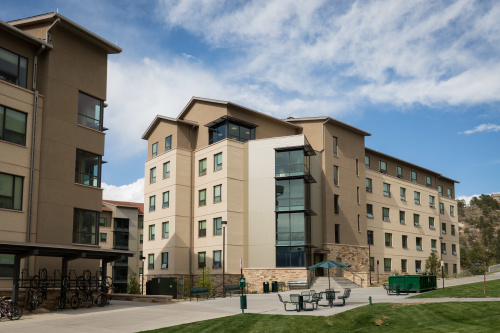Formal Resolution Procedures
Formal Resolution Procedures
Formal Resolution Procedures
Both parties shall have the right to:
-
What are Support Measures?
Support measures are non-disciplinary, non-punitive individualized services offered as appropriate, as reasonably available, and without fee or charge to the complainant or the respondent. Support Measures are designed to restore or preserve equal access to the university’s education program or activity without unreasonably burdening the other party, including measures designed to protect the safety of all parties or the university’s educational or work environment, or deter misconduct.
Support measures may be kept in place, lifted, or modified as additional information is obtained, or may be extended permanently, as appropriate
Witnesses or other participants in a Formal Resolution Procedure may also request support measures. The OIE will maintain oversight of these requests and the provision of any such measures.
The university will keep confidential any support measures provided to the complainant or respondent, to the extent that maintaining such confidentiality will not impair the university’s ability to provide the support measures.
-
Types of Support Measures
Support measures that may be available include, but are not limited to:
- academic services (extensions of time or other course-related adjustments, arranging for a party to re-take a course, excuse related absences, or withdraw from a class without penalty);
- accessing medical services;
- accessing counseling services;
- employment modifications;
- campus safety escort services and increased security and monitoring of certain areas of campus;
- transportation/parking modifications;
- mutual or individual no-contact orders enforced by the university;
- discussing options and providing referral information for obtaining criminal or civil protection or restraining orders;
- residential relocations on or off campus; and
- student refund
-
Types of Safety Measures
Orders of Protection, Restraining Orders, or Similar Lawful Orders
Individuals interested in obtaining an Order of Protection, or any other order issued by a court, must pursue those options on their own behalf. Restraining orders are obtained through the El Paso County Courthouse. More information on obtaining a restraining order in Colorado is located at https://www.courts.state.co.us/Self_Help/protectionorders/ .
UCCS complies with Colorado law in recognizing orders of protection. Any person who obtains an order of protection from Colorado or any other state should provide a copy to the UCCS Police Department and the OIE.
No-Contact Orders
The university may issue a “No-Contact Order to participants in an OIE resolution process. These No-Contact Orders are separate from a court-issued protection order. OIE is responsible for determining if a No-Contact Order has been violated and will make referrals to the appropriate disciplinary authority for disciplinary action. The OIE may also inform UCCS Police of the No-Contact Order. The university may issue exclusion orders pursuant to Regent Law Article 14.B.6. UCCS Police may issue advisements to limit contact with a specific individual(s).
Some safety measures involve restricting a respondent’s access to university programs and activities and may not apply until after the completion of a Formal Resolution Procedure unless emergency removal action is determined appropriate.
The OIE will determine whether safety measures are appropriate after an individualized assessment. Every effort should be made to avoid depriving any student of educational access. Safety measures may be kept in place, lifted, or modified as additional information is obtained, or may be extended permanently, as appropriate.
Emergency Removals
The university may remove a respondent from an education program or activity, or employment on an emergency basis after: 1) the university undertakes an individualized safety and risk analysis, 2) determines that an immediate threat to the physical health or safety of any individuals arising from the allegations of misconduct justifies removal, and 3) provides the respondent with notice and an opportunity to challenge the decision immediately following the removal.
Types of emergency removal include, but are not limited to:
- Interim student suspension;
- Interim exclusion order for parts of or entire campus, classes, etc.;
- Employee Administrative Leave; and
- Temporary suspension of duties, including responsibilities associated with student-employment
-
What is an Individualized Safety and Risk Analysis?
The following factors will be considered in the individualized safety and risk analysis:
- Seriousness of the alleged conduct;
- Location of the alleged incident(s);
- The risk that the alleged perpetrator will commit additional acts of sexual or other violence;
- Whether the alleged perpetrator threatened further sexual or other violence against the alleged victim or others;
- Whether there have been other misconduct complaints about the same alleged perpetrator or if the perpetrator has a known history of arrests or records from a prior school indicating a history of sexual or other violence;
- The existence of multiple alleged victims and/or perpetrators;
- Whether the conduct was facilitated by the incapacitation of the alleged victim (through alcohol, drugs, disability, unconsciousness, or other means);
- Whether the alleged conduct was perpetrated with force, violence, or weapons;
- Whether the alleged victim is a minor;
- Whether the alleged conduct reveals a pattern of perpetration (by the alleged perpetrator, by a particular group or organization, around a particular recurring event or activity, and/or a particular location); and/or
- Whether any other aggravating circumstances or signs of predatory behavior are present.
-
What if I don't agree with an Emergency Removal Decision?
In the case of an emergency removal, the respondent will be provided written notice of the alleged prohibited conduct and afforded prompt opportunity to challenge the decision. The written notice will include the procedure for challenging the decision based on either the Student Code of Conduct process (for students) or the HR process (for employees).

